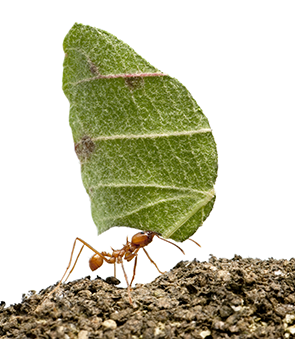SPECIES PROFILE: Acromyrmex octospinosus
This popular species are famed for their trails of leaf-toting workers and fungus cultivation

BASIC INFORMATION
Scientific name: Acromyrmex octospinosus
Common name: Leafcutter ants
Geographic spread: From Mexico to northern parts of South America and into the Caribbean
Habitat: Various; including forests, open agricultural fields and residential properties
Queen’s life expectancy: 8 – 15 years
Queen size: ~12mm – 14mm
Worker size: ~3mm – 15mm
Castes: Queen, workers
CARE
Care level: High. Leafcutters require specialised, spacious setups and have complete humidity and temperature requirements
Humidity requirements: 80 – 90% in the nest, up to 70% in the outworld
Temperature requirements: 24 – 28°C (75 – 82°F) in the nest, slightly lower in the outworld
Suggested housing: High vertical acrylic or glass pods with interconnecting tubes
Nutrition: Leafcutters cultivate Leucoagaricus gongylophorus, a type of fungus, as their main food source. Considerable quantities of foliage, including rose, blackberry, raspberry, boxwood, elderberry, oak, and lime leaves must be provided. They can also be offered some fruit as well as sugar or honey water.
BEHAVIOUR
Hibernation: No
Nuptial flights: Early summer, often during rainy periods
Colony size: Up to 40,000
Monogyne/polygyne: Polygyne
Founding style: Semi-claustral
Species Summary
Leafcutter ants are rather unique ant that harvests the leaves of flowering plants to feed and cultivate their fungus gardens that form both their home and their larder. Cutting chunks out of leaves, they are often considered pests by farmers. Leafcutters can travel great distances to forage for leaves that are used to feed their fungus, and these long trails of ants carrying their flags have made for some very iconic images.
Due to their complex humidity and temperature requirements and complete dependence on their fungus gardens, leafcutter ants are best suited to experienced keepers with plenty of space to accommodate their need for extensive paths to travel in their search for foliage. The health of the fungus is critical to the survival of the colony, and careful management of the conditions in which the colony is kept is vital.
The sight of a long trail of leaf-toting leafcutter ants and their brain-like fungus is most impressive, and they are often seen in museums, zoos and other public displays. In the right setup, they can also offer an amazing visual effect in the keeper’s home.
Credits: Text by Raj Gata-Aura of Ant Lab. Photograph 131665694 / Acromyrmex © Isselee | Dreamstime.com.

